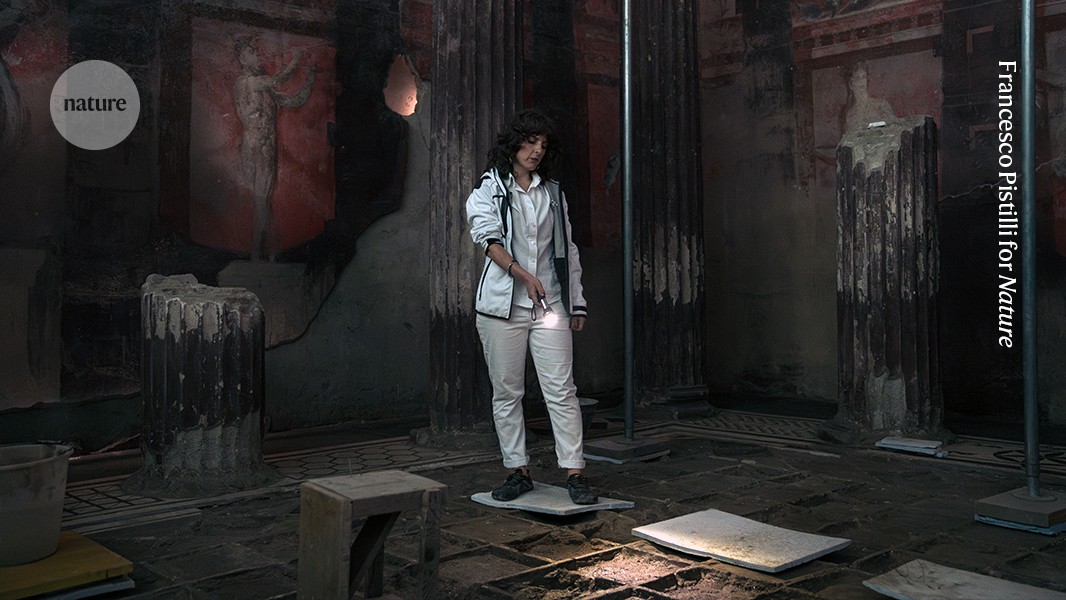“In this photo, I’m in the banquet hall of the House of Thiasus, a space that was frozen mid-renovation by the volcanic eruption of Vesuvius in ad 79.
The space shows the beauty of Roman design: the floor mosaics give way to columns, and frescoes of dancers, fish and laden tables still adorn the walls. Most arresting of all is the deep cinnabar-red pigment that’s used in some of the frescoes: it is rare, unstable and made with mercury sulfide. Too much light or moisture could be enough to darken the paint to black. My job is to ensure that doesn’t happen.
As an art conservator, I work alongside archaeologists, engineers, architects and fellow restorers to excavate sites here. Every dig is a race against time: objects that have rested underground for two millennia suddenly face sunlight, air and humidity.
When uncovering frescoes, the main challenge is controlling those factors, especially how the stone dries: it must do so slowly, and requires careful monitoring to prevent salts, carried by moisture migrating outwards, from crystallizing.


